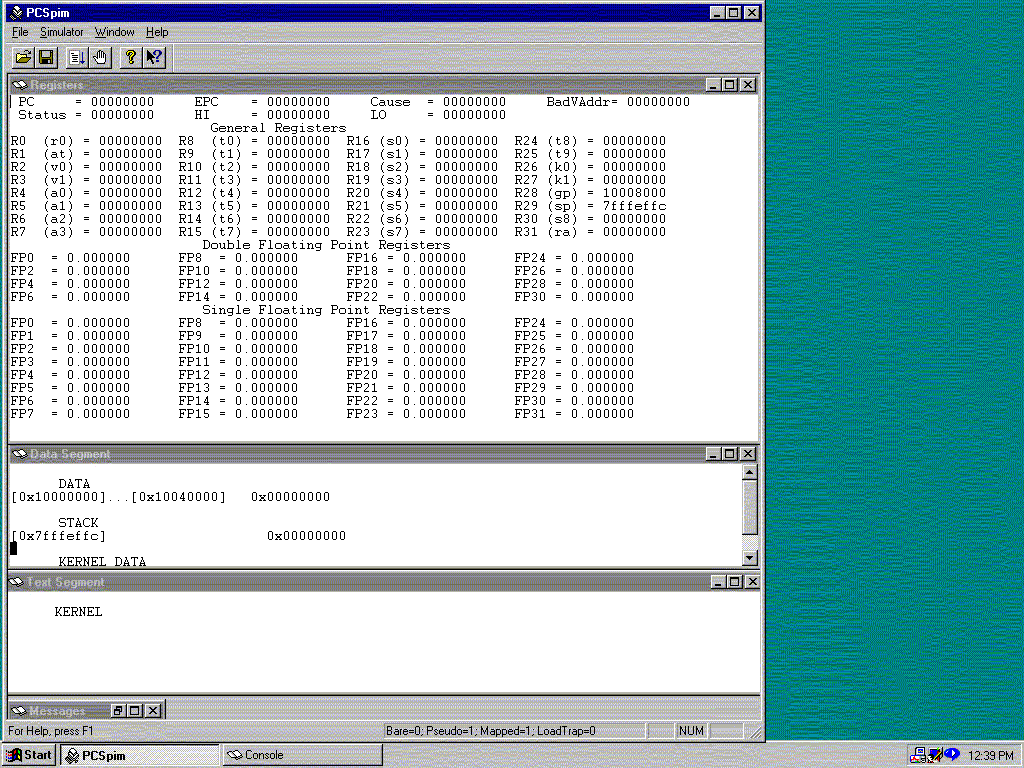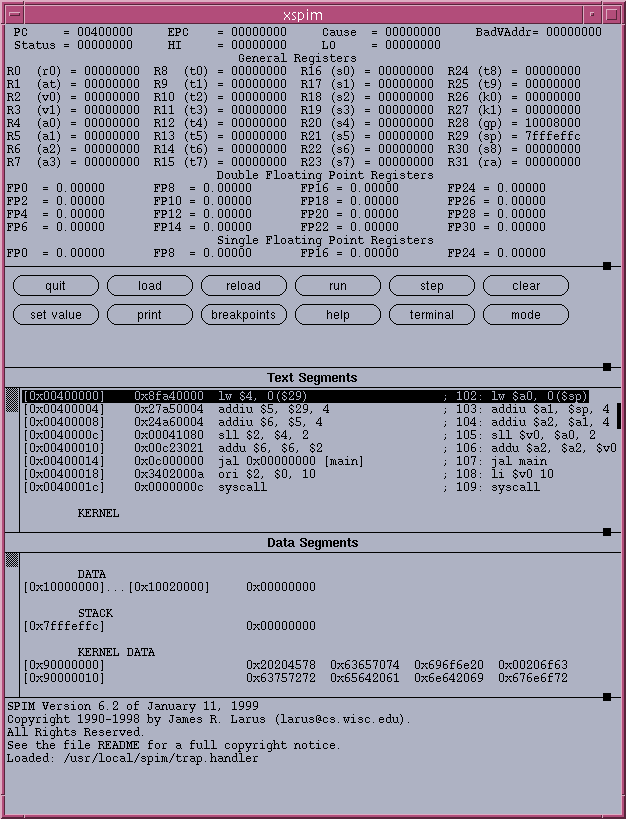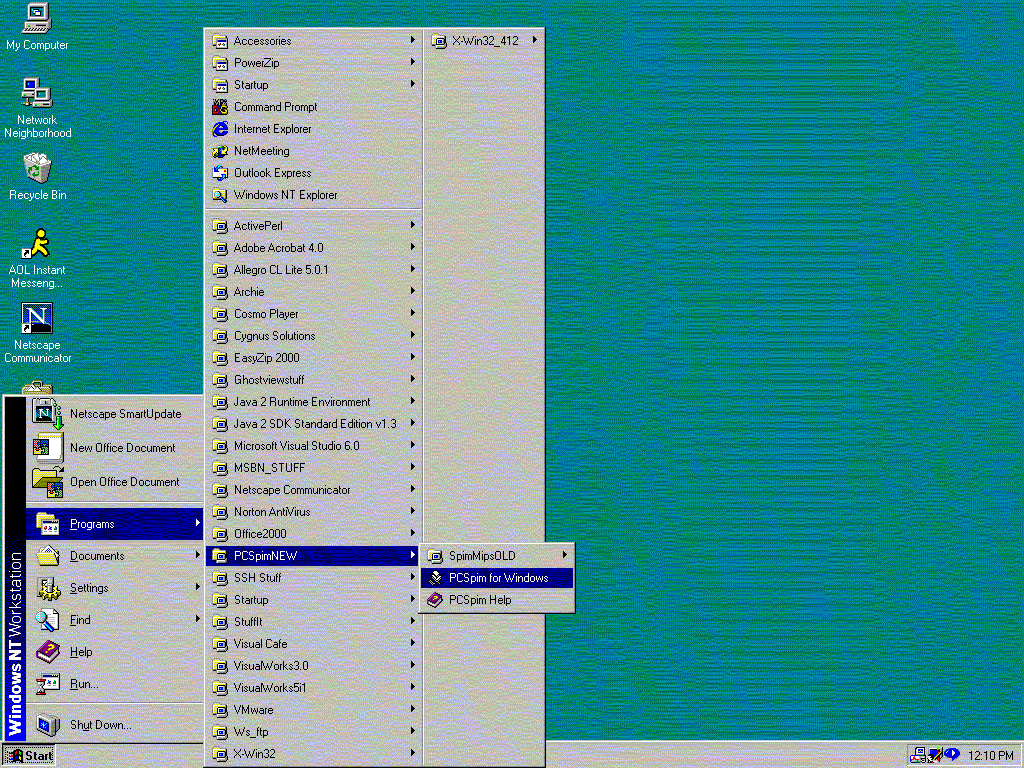button do not pay any attention to the value in
the starting address field, except if it only have zeros). If you
are using system calls to print data or request data, then the console window will appear, but it tends to dissapear
immediately after it was shown, thus, you must open it with the menu
Window.

To track your program, steb-by-step, select the option step at the menu
Simulator and then click it each time you want to execute an instruction.
(You will see the registers and code segment change.)
To finish your session, just select exit at the menu File.
Sometimes there is a minor configuration problem on the PCSpim
installed in our Windows network.
If you are working on the NT machines, please verify that the
Trap File has been properly loaded:
Click on Simulator->Settings and near to the box named Load trap
file should appear the name "Trap.handler". Otherwise, check the box
and browse for that file; it is usually located at
"C:\Program Files\PCSpim\Trap.handler".
3. A trial program
Write the following program using any editor for plain text (like pico, vi,
x-windows text editor, Windows notepad, etc.). You may want to add the extesion
.asm to the filename, to facilitate its identification (this is
convenient but not required.)
This program performs the addition of the first 100 natural numbers and displays
the result. It exhibits all the basic MIPS features to create complex Assembly
programs.
# Comments:
# This program performs the addition of the first 100
# natural numbers and displays the result.
# Variables:
# $s1 - iterations counter
# $s4 - accumulator for sum
# $a0 - number of system service
.data
message: .asciiz "1+2+...+100 = "
.text
.globl main
main:
la $4, message # $a0 <- start of welcome message
li $v0, 4 # $v0 <- service #4
syscall # call to system service
nop # not operation
move $20, $zero # $s4 <- 0, initialize accumulator
move $17, $0 # $s1 <- 0, initialize iterations counter
# Next two instructions mean "While $s1 < 100 Do"
loop: slti $18, $17, 101 # $s1 < 100 => $s2 <- 1
beq $18, $0, end_lop # $s2 = 0 => go to end_loop
add $20, $20, $17 # $s4 <- $s4 + $s1, add number
add $17, $17, 1 # $s1 <- $s1 + 1, update counter of iterations
j loop # go to loop
nop
end_lop: move $4, $20 # $a0 <- $s4, load result of sum
li $v0,1 # $v0 <- service #1 (data is already in $a0)
syscall # call to system service
_exit: # main program exit
li $v0,10 # $v0 <- service #10
syscall # call to system service
nop
After loading and running the program you must obtain 5050 as result.
Important information
You will be required to submit your source code to the TA via email and he/she
will test your programs under a Unix environment. Please send them as
attachments of your message, in plain text format, and with the number of
project as subject. Do not pack or compress your files in any form.
Also, notice that transferring text files between Unix and Windows may modify
the non-visible character at the end of each line, which might cause problems
during the program execution. Therefore, it is very convenient testing your
projects on the Unix network before submission to the TA.
All the information you need to create MIPS programs may be found in the book
Computer Organization and Design 3rd. ed., by
Patterson, et al. CD-Appendix A, (it includes an Assembly language reference,
system calls, assembler directives and exceptions). Additionally, all chapter
2 is devoted to analyze in depth the MIPS Assembly languge.
NEW
MIPS Quick Reference
Copyright © 2000, 2005 Jorge Vasconcelos-Santillan. Johns Hopkins
University, Department of Computer Science.


